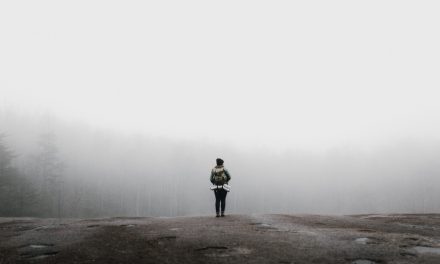Hiking is a fantastic way to get outside and enjoy the beauty of nature. But reckless hikers can actually do a lot of damage to the wonderful landscapes we know and love.
Thankfully, being a responsible hiker isn’t very difficult. In fact, by taking a few simple steps, you can ensure that you’re acting appropriately whenever you’re enjoying yourself in the great outdoors.
Coming up, we’ve compiled a list of some of our top tips for being a responsible hiker, so we can all enjoy our favorite trails for years to come.
1. Understand Leave No Trace
The Leave No Trace Center For Outdoor Ethics (LNT) is an organization that’s specifically designed to help hikers be responsible when they’re out and about. LNT has a set of 7 principles that are a good place to start if you’re new to the outdoors.
If you’re looking for more specific guidance on best practices for outdoor activities, LNT also offers a number of courses for hikers and campers. Their 1-day Awareness Courses are a great starting point for people that don’t have a lot of free time.
Or, if you’re looking to introduce your friends and family to the outdoors, you can consider a 2-day Trainer Course. People looking to work in the outdoor industry can even sign up for an intensive 5-day Master Educator program.
2. Follow The Rules
Pretty much everything we do these days involves rules. Hiking is no exception.
When you’re recreating on public land, it’s incredibly important that you follow the regulations. Local land managers are in charge of protecting our favorite outdoor recreation areas, so they create rules and regulations to help ensure everyone is acting responsibly.
While these rules might seem annoying or cumbersome, they’re put in place for a reason. Group size limitations, camping restrictions, and permit requirements are all designed to ensure everyone has a fantastic experience on public land.
So, the next time you visit federal, state, or municipal land, be a responsible hiker. Do a bit of research before you leave to ensure you’re not caught off guard by any unique regulations. Your land manages and your fellow hikers will thank you for following the rules!
3. Stay On Trail
One of the most common ways that hikers unknowingly damage their recreation areas is by straying off the trail. While walking off-trail might not seem like a big deal, it can have devastating consequences for the environment.
When we walk off the trail, we can destroy and kill nearby plants. These plants are critical to a healthy ecosystem, so it’s vital that we do our best to avoid trampling them.
Plus, while one person walking off a trail might not seem like a big deal, imagine what would happen if thousands of people did the same thing. Every footstep erodes away soil, which means hikers can unintentionally create lots of crisscrossing “social trails” when they step off the beaten path.
These social trails get wider and wider with every footstep, destroying all plant life as they grow. So, for the health of your favorite recreation areas, stay on the trail. Don’t cut switchbacks and walk through the mud, not around it.
If horse packers or other hikers need to pass you, simply move to one side of the trail. The only time you should step off the trail is if you’re going to take a long break or to go to the toilet. In these situations, tread lightly and take care not to damage any plant life whenever possible.
4. Have The Right Gear
Being a responsible hiker starts before you ever leave home. What you chose to bring with you on your next backpacking trip can make or break your experience.
Without the right gear, a hiking adventure can be an uncomfortable affair. But, with the right equipment in tow, you can have a fantastic time outdoors.
Plus, if you head outside without the appropriate equipment, you can potentially put yourself in danger. If you get hurt or stuck because you showed up without the right gear, search and rescue teams are going to (hopefully) come look for you.
While emergency responders are happy to help, backcountry rescues can be dangerous for everyone involved. In fact, search and rescue team members have died looking for lost and injured hikers. Of course, you should always call for help in an emergency.
However, if having the right gear can prevent that emergency from happening in the first place, then that’s the most responsible thing to do. So, on your next hiking trip, be sure you back enough gear. At a bare minimum, you should always have the 10 Essentials:
- Food
- Water
- Shelter
- Fire Starting Materials
- Knife
- Sun Protection
- First Aid Kit – For help on building your own, check out this guide
- Navigation Tools
- Headlamp
- Warm Clothing
5. Know What To Do If You Get Lost
As we’ve mentioned, search and rescue missions can be dangerous for both the first responders and the injured hikers. But, search and rescue teams aren’t only called out for injured recreationists. In fact, they’re often called out to search for lost hikers.
So, in addition to packing the right gear, it’s important that you know what to do if you get lost. Interestingly, a study by SmokyMountains found that 77% of lost hikers need to be rescued. This means that a lot of emergency personnel have to put themselves in harm’s way to get people home.
The solution? Know what to do if you get lost. In some situations, you may still need to be rescued. But, responsible hikers will do what they can to stay safe and sound in the outdoors.
6. Learn The Rules Of The Trail
When you get your learner’s permit, you have to learn the rules of the road. The same is true for hiking, but this time you need to learn the rules of the trail.
On-trail hiking is all about sharing a path with other visitors. So, you need to know what’s expected of you before you go out. Here’s what you should do when encountering others on the trail:
Rules Of The Trail:
- Let Others Pass. You should always let faster hikers pass as they are likely trying to cover a lot of ground in a short period of time. Step to the side of the trail and give them enough space to get by.
- Be Courteous When Passing Others. If you’re the faster hiker, call out to the people in front of you so you don’t scare them as you pass. But, keep in mind that some people are deaf, hard-of-hearing, or like to hike with headphones in, so they may not hear you when you talk to them.
- Yield To Uphill Hikers. Uphill hikers have the right of way on a trail. So, if you’re heading downhill, let others pass if they want to keep moving.
- Give Way To Bikes. Bikers have the right of way over hikers on the trail, mostly because they’re moving way faster than you are. Generally, a biker will call out before they pass you so you have time to move out of their way.
- Know How To Act Around Horses. Horse packers always have priority on the trail. When a horse approaches, call out to their human so the horses know that you’re a person, too. Then, step to the downhill side of the trail. Horses can get spooked by animals that are larger than them, so never step to the uphill side of the trail unless you absolutely have to.
7. Stay In Control Of Your Pets
With the notable exception of all National Parks, most publically-owned land is pet-friendly. But, most land managers have rules about pets on the trail, especially when it comes to the use of leashes.
If pets are allowed on trails and public lands, they almost always have to be leashed. Unfortunately, it doesn’t matter how well your pup is trained – if there’s a rule that you need to leash your pet, you need to follow it.
Even the best-trained dog can scare wildlife or other visitors. So, check in with your local land manager to find out if there are any restrictions on pets before you head outside.
8. Pack It In, Pack It Out
No one wants to walk down a trail in a beautiful alpine meadow only to see a pile of trash on the side. Litter has no place in the outdoors, so it’s important that we always dispose of our waste properly.
The general guide is that if you “pack it in” you need to “pack it out.” Basically, anything you bring into the outdoors needs to go home with you. Whether it’s food, plastic bags, or headlamp batteries, we need to bring these items back home and dispose of them in a responsible manner.
Disposing of our waste properly also involves knowing how to use the toilet when you’re outside. For more advice, check out Principle #3 of Leave No Trace.
9. Be A Steward Of The Land
Most public lands see a lot of use. Hikers, bikers, climbers, horse packers, and paddlers all leave their mark on the land, however small. Over time, our local trails, campsites, and recreations can fall into disrepair.
If you spend a lot of time at a certain state park or national forest, consider finding out what opportunities there are for you to give back. Most land managers or local trail coalitions will host a few “trail work” days each year.
These free events are a great way to help maintain your favorite trails and campsites just by donating your time. Plus, trail work days are also a nice opportunity to meet other outdoor-minded people in your local area.
10. Be Respectful Of Wildlife
A quality wildlife encounter is sure to be a highlight of any outdoor trip. But, irresponsible actions around wildlife can be dangerous or deadly for both people and animals, alike.
Respecting wildlife starts with maintaining an appropriate distance. This distance varies from species to species, but the larger the animal, the further away you should stay. Of course, if a small animal, like a squirrel, gets quite close to you, there’s no reason to run and hide. However, animals that are this comfortable around you have become habituated to humans, which can threaten their survival.
In addition to maintaining your distance, staying quiet and low-profile in the outdoors is a good way to avoid spooking the wildlife. Loud noises can scare a female animal away from her young, which leaves them vulnerable to predators.
Finally, it’s important to always store your food properly when you’re outside. Bears, in particular, are known to break into cars, in order to get food. So, it’s important to store all food in bear-proof containers or using bear-proof methods, in accordance with local guidelines.
- Tint Colors Explained For Polarized Sunglasses - November 19, 2022
- Top 4 Best Portable Camping Showers of 2022 - November 19, 2022
- How to Choose Water Shoes & What to Look For - November 18, 2022






